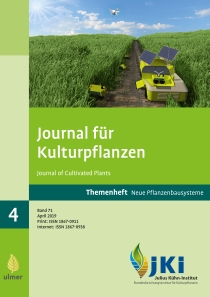Optimized seed patterns in cereals
DOI:
https://doi.org/10.5073/JfK.2019.04.03Keywords:
optimized seed pattern, uniform seed pattern, precision seeding, cereals, resource use efficiency, stress tolerance, weed suppressionAbstract
An optimized seed pattern with even distances increases the utilizable space of individual plants and reduces intraspecific competition. In addition to higher and more stable yields, benefits in terms of resource use efficiency, stress tolerance and weed suppression are expected. Currently, cereals are mainly sown in rows, which does not correspond to the crops’ optimum, but allows a fast sowing. Alternatively, precision seeding is available for cereals, which already allows a more uniform seed pattern.
The most even spacing per single plant can be achieved with a uniform seed pattern in a triangular lattice, which is technically not yet feasible in cereals. In order to test the expected benefits of a uniform seed pattern in cereals, field trials are conducted at the JKI with winter wheat to answer questions regarding yield, resource use efficiency and stress tolerance. At the same time, the adaptation of a precision seeding and the development of an autonomous sowing system are planned in order to enable a uniform seed pattern.
Downloads
Published
Issue
Section
License
The content of the journal is licensed under the Creative Commons Attribution 4.0 License. Any user is free to share and adapt (remix, transform, build upon) the content as long as the original publication is attributed (authors, title, year, journal, issue, pages).
The copyright of the published work remains with the authors. The authors grant the Journal of Cultivated Plants, the Julius Kühn-Institut and the OpenAgrar repository the non-exclusive right to distribute and exploit the work.







